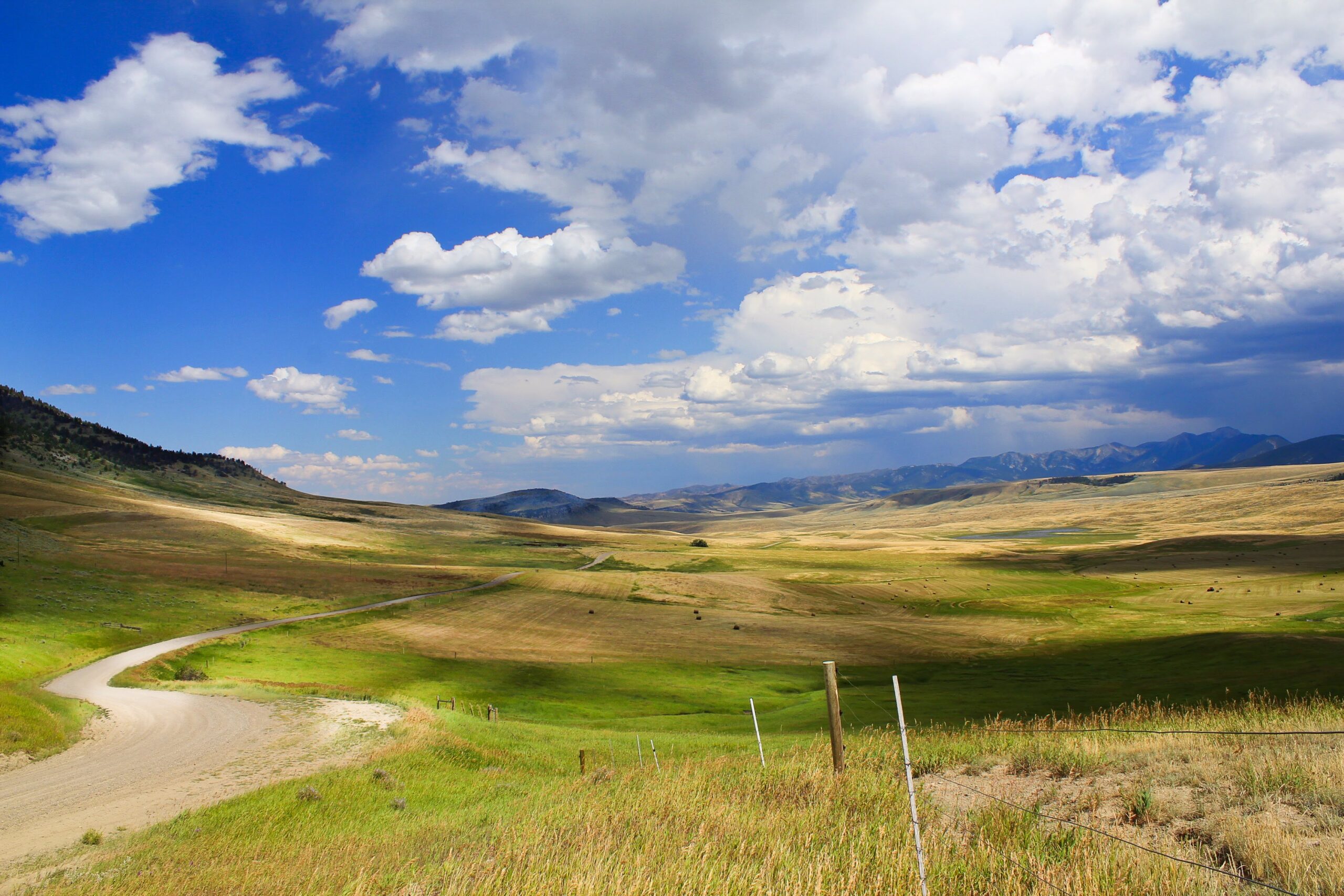On an early September morning, Cody Ball, a rancher near Roundup, Montana, sees two dozen elk cross the public land boundary onto his ranch. To many wildlife enthusiasts, this scene would be idyllic, but to Ball it is a nuisance. Big game animals routinely bust fences and forage on valuable crops. Because of this property damage, many landowners in Montana consider wildlife a liability and do nothing to improve their habitat on private lands.
Six hundred miles south, a similar scene unfolds as Stan Deroulis, a rancher in northwest Colorado, sees a herd of elk foraging on the alfalfa meant for his cows. Between the forage consumption and the property damage, wildlife costs the ranch thousands of dollars each year. But as Deroulis watches the elk feed, a wry smile comes to his face. He considers the elk an asset and actively invests in improving their habitat on his ranch.
What matters for successful wildlife management is a combination of these two valuable resources: wildlife and habitat.
Why such a disparity in these two ranchers’ outlook toward elk and elk habitat? Each is merely responding to the incentives created by their state’s wildlife management programs.
Under Montana’s Block Management Program, landowners have little incentive to provide quality wildlife habitat or public hunting opportunities. In Colorado, however, a program known as Ranching for Wildlife (RFW) uses financial incentives to encourage wildlife stewardship and quality public hunting experiences on private land. The difference in the two programs is subtle, yet it has an enormous effect on wildlife management in two otherwise similar states.
The source of much of the tension that pervades rural land management discussions is the existence of public wildlife on private land. This creates what economists call a split ownership problem: the state owns the wildlife, but private landowners own much of the habitat critical to wildlife survival. What matters for successful wildlife management is a combination of these two valuable resources: wildlife and habitat.
The challenge of split ownership is dividing the returns from the resource combination of public wildlife and private lands in such a way that both resource owners—the landowners and the state—are rewarded for their contributions. Instead, in many states, landowners don’t get any returns from wildlife habitat, they only pay the costs. Ranchers like Ball bear the costs of wildlife eating their crops and damaging their property but rarely receive compensation from the state. In Montana alone, the estimated annual cost of forage consumed by big game species on private lands exceeds $31 million. This expense threatens the financial stability of cash-strapped agricultural producers as well as their provision of public goods such as open space. It also turns wildlife into a liability for many private landowners who then allow public hunting as a way to drive the wildlife off the property.
If It Pays It Stays
Colorado has developed a way to encourage landowners to provide wildlife habitat by creating mutual returns to the private landowner and to the state wildlife agency through Ranching for Wildlife. Not to be confused with game ranching, RFW creates a partnership between private landowners and wildlife habitat purveyors and the state as owner of the wildlife. Specifically, longer hunting seasons and transferable hunting tags allow participating landowners to lease hunting rights directly to high-paying, nonresident hunters. In return for this profit potential, enrolled landowners provide valuable public benefits, namely, a certain amount of free hunting access for Colorado residents and very specific habitat improvements for both game and nongame species.
Ranching for wildlife solves the split ownership problem by sharing the returns generated from combining public wildlife and private habitat.
To ensure that the profit motive generates public benefits, the number of transferable tags an enrolled landowner receives depends on the number of animals on the property, the completion of habitat improvement objectives, as well as the satisfaction and success ratio of public hunters. In short, RFW solves the split ownership problem by sharing the returns generated from combining public wildlife and private habitat.
Different Objectives, Different Incentives
Unlike Colorado, Montana does not reward private landowners for improving wildlife habitat or allowing public hunting access. Although the state’s Block Management Program pays enrolled landowners a small fee for every hunter they allow on their property, this payment is explicitly intended to only offset the impacts of allowing public access. As such, block management is more of a break-even proposition than a profit opportunity for landowners. Furthermore, it offers no compensation for wildlife habitat improvements.
In this way, the program fails to resolve the split ownership problem created by public wildlife on private land. Indeed, block management was never intended to solve this problem. Rather, it was intended to maximize the quantity—not necessarily the quality— of public hunting opportunities. As such, Montana ranchers still bear the full costs of the public’s wildlife spilling onto their land, but reap only a fraction of the potential benefits.
Although private landowners in Montana can and do lease their property’s hunting rights, the value of those leases is significantly reduced by the uncertainty of a nonresident drawing the required hunting licenses and permits. Moreover, such leases are not conditioned upon the private landowner granting public access or improving wildlife habitat, as is required by Colorado’s RFW program. In essence, the total amount of pie available is less than it could be if the state and the private landowners combined forces and shared in the returns from wildlife
The Nirvana Fantasy
Admittedly, Colorado’s Ranching for Wildlife program is not perfect. Landowners without the requisite 12,000 contiguous acres could undoubtedly improve wildlife habitat and public hunting opportunities, but they are excluded from the program. Some hunters complain that the public hunts on enrolled properties are poor and that the private landowners save their best places and best dates for the paying (nonresident) customers. And other critics decry the privatization of Colorado’s wildlife, claiming that the state has violated its fiduciary duty as wildlife trustee by letting a small group of private landowners profit from a public trust resource.
Accurate or not, these allegations of imperfection do not justify rejecting the concept. Doing so risks falling victim to the “Nirvana Fallacy”—the belief that even superior alternatives should be rejected if they fail to achieve a perfect policy. The more appropriate consideration is whether RFW or some other policy where wildlife owners and habitat producers share in the costs and benefits of wildlife management is superior to one where they do not cooperate. Indeed, public access to enrolled ranches might not be available during the best hunting periods, but some access is better than none. Similarly, private landowners might derive profits from a public trust resource such as elk but, as a prerequisite to earning those profits, they might also generate public benefits such as open space so that the quid pro quo does not violate the Public Trust Doctrine.
Several states across the West are harnessing the incentives to promote stewardship by embracing ranching for wildlife programs. These programs are providing landowners with new ways to realize higher returns from wildlife, allowing wildlife agencies an opportunity to get better wildlife management at a lower cost, and offering more opportunities to both free and fee hunters. More broadly, as stated in PERC’s Hunting for Habitat: A Practical Guide to State-landowner Partnerships (1999), “Ranching for Wildlife helps achieve a goal that all Americans want—lands flowing with clean steams, enriched with natural vegetation, and full of free roaming wild animals.”
For more, see Reed Watson’s article “Public Wildlife on Private Land: Unifying the Split Estate to Enhance Trust Resources“ in the Duke Environmental Law & Policy Forum.




